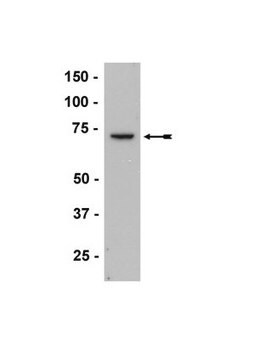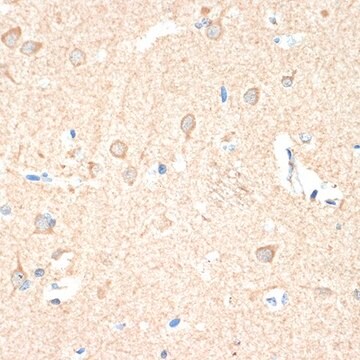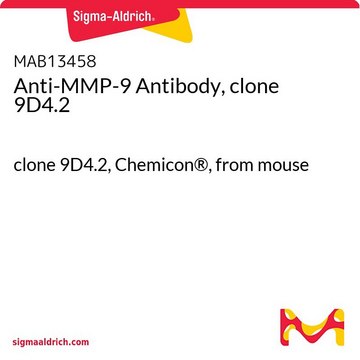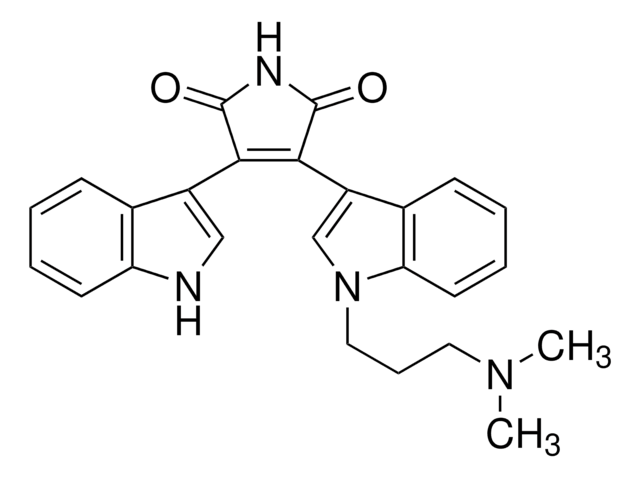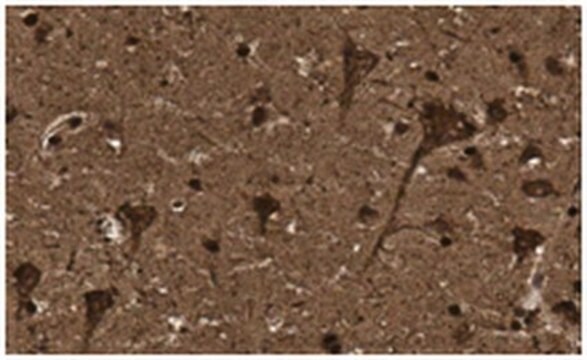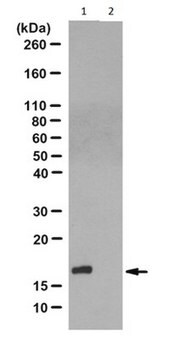G4405
Anti-Guanylyl Cyclase β1 (ER-19) antibody produced in rabbit

affinity isolated antibody, buffered aqueous solution
Sinónimos:
Anti-GC-S-beta-1, Anti-GC-SB3, Anti-GUC1B3, Anti-GUCB3, Anti-GUCSB3, Anti-GUCY1B3
About This Item
Productos recomendados
biological source
rabbit
conjugate
unconjugated
antibody form
affinity isolated antibody
antibody product type
primary antibodies
clone
polyclonal
form
buffered aqueous solution
mol wt
antigen 70 kDa
species reactivity
rat, mouse, human, bovine
enhanced validation
independent
Learn more about Antibody Enhanced Validation
technique(s)
immunohistochemistry (formalin-fixed, paraffin-embedded sections): 1:400 using trypsin-digested human, bovine and mouse heart tissue
immunoprecipitation (IP): 2-3 μg using 60-120 μg of a cytosolic fraction of rat brain
western blot: 1:2,000 using cytosolic fraction of rat brain
shipped in
dry ice
storage temp.
−20°C
target post-translational modification
unmodified
Gene Information
human ... GUCY1B3(2983)
mouse ... Gucy1b3(54195)
rat ... Gucy1b3(25202)
General description
Immunogen
Application
It has been used as a primary antibody for:
- localization of β1 subunits of sGC (soluble guanylate cyclase) in the guinea pig gastrointestinal tract
- detection of expression of sGC in the vasculature of rat skeletal muscle
- localization of the functional subunit of NO receptors, sGCβ1 in guinea pig caecum
Biochem/physiol Actions
Physical form
Disclaimer
Not finding the right product?
Try our Herramienta de selección de productos.
Storage Class
10 - Combustible liquids
wgk_germany
WGK 1
flash_point_f
Not applicable
flash_point_c
Not applicable
Certificados de análisis (COA)
Busque Certificados de análisis (COA) introduciendo el número de lote del producto. Los números de lote se encuentran en la etiqueta del producto después de las palabras «Lot» o «Batch»
¿Ya tiene este producto?
Encuentre la documentación para los productos que ha comprado recientemente en la Biblioteca de documentos.
Nuestro equipo de científicos tiene experiencia en todas las áreas de investigación: Ciencias de la vida, Ciencia de los materiales, Síntesis química, Cromatografía, Analítica y muchas otras.
Póngase en contacto con el Servicio técnico
